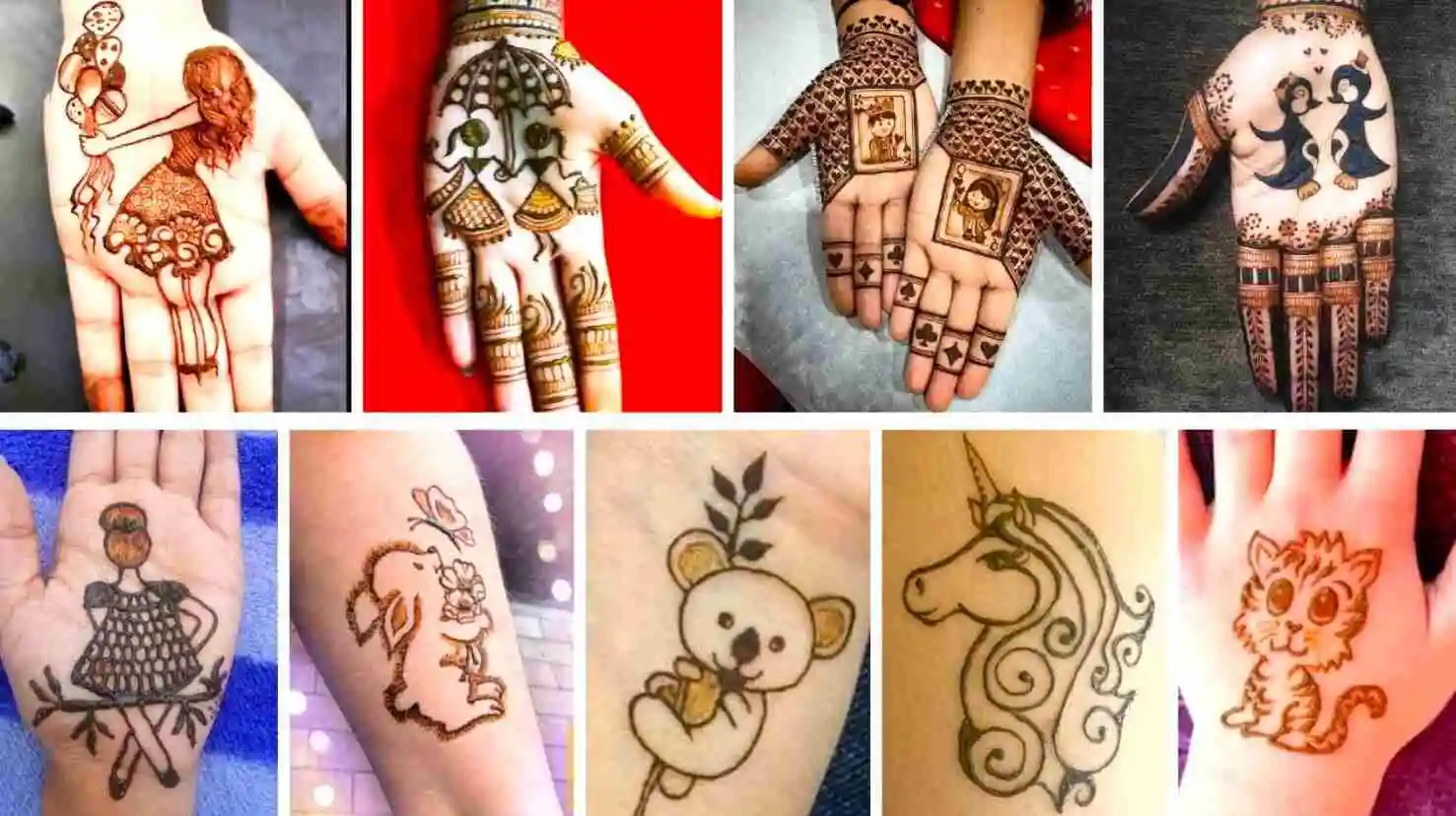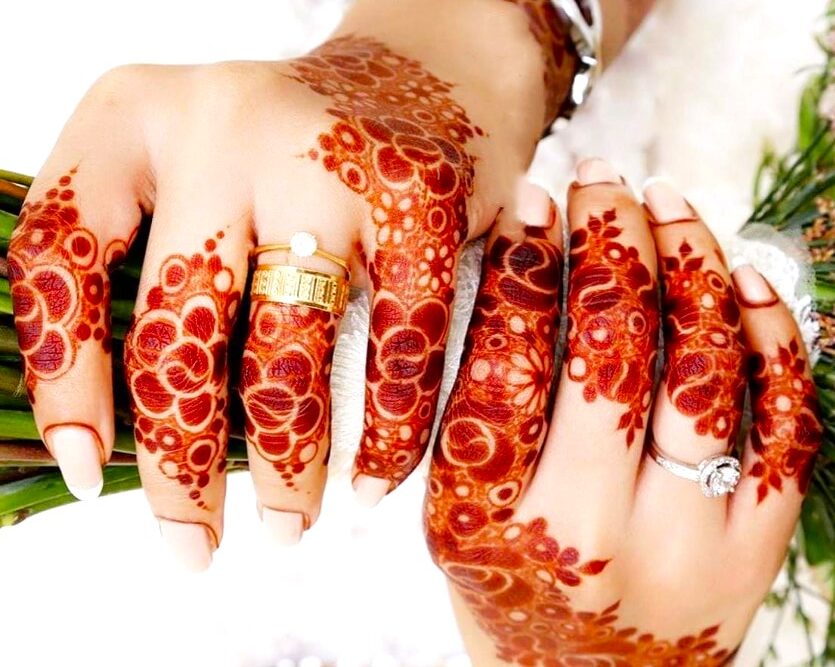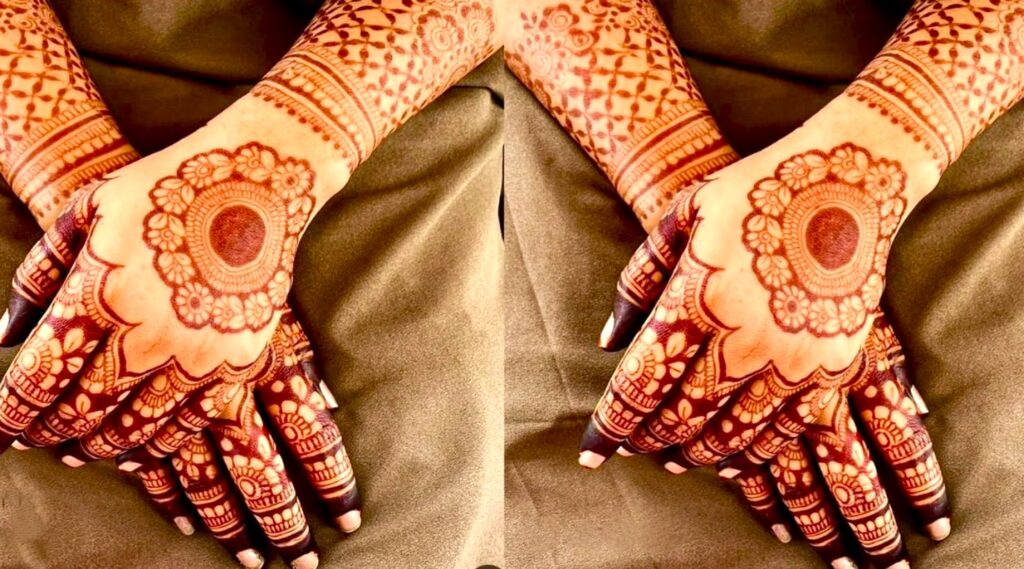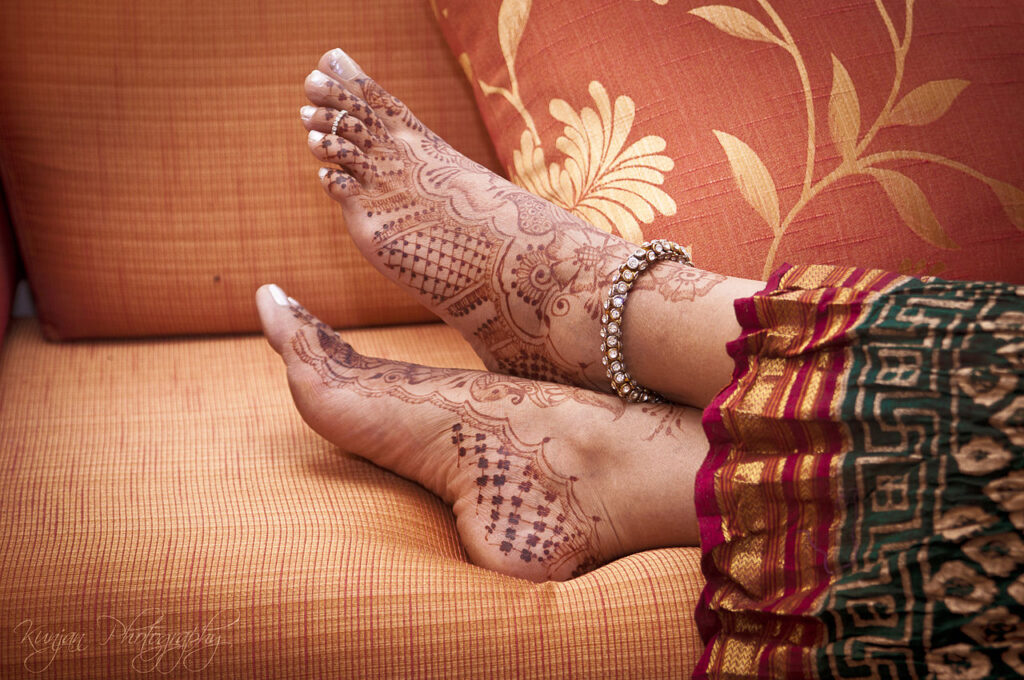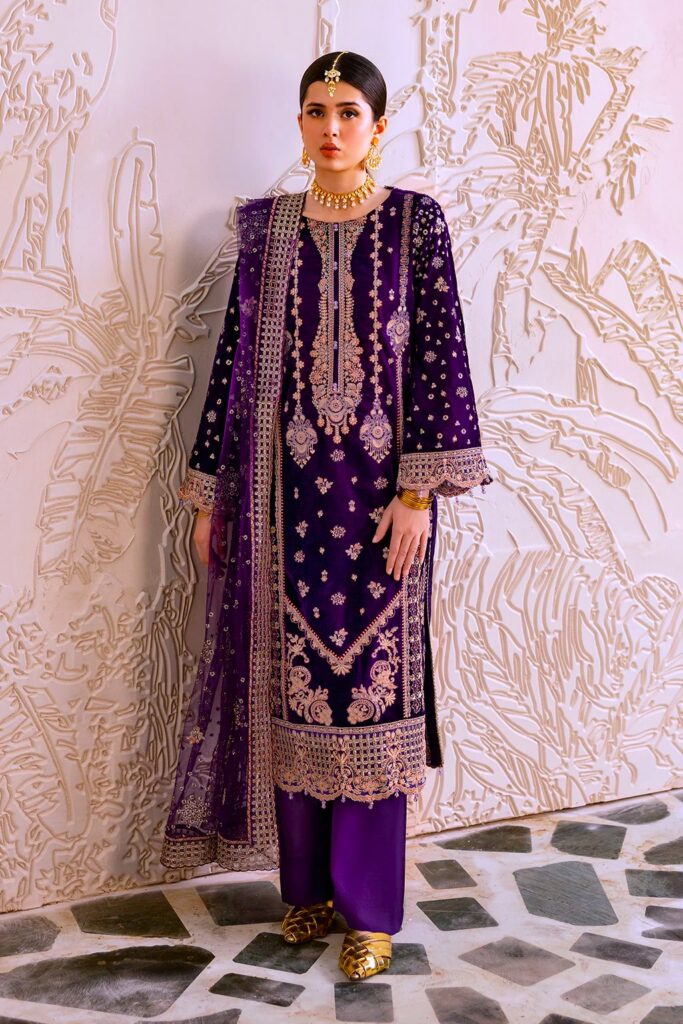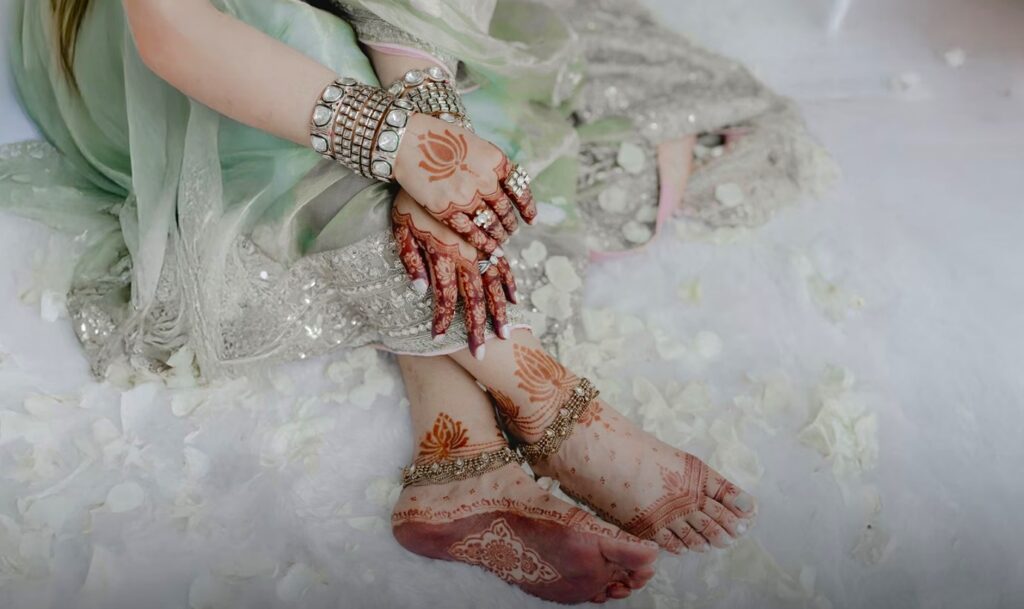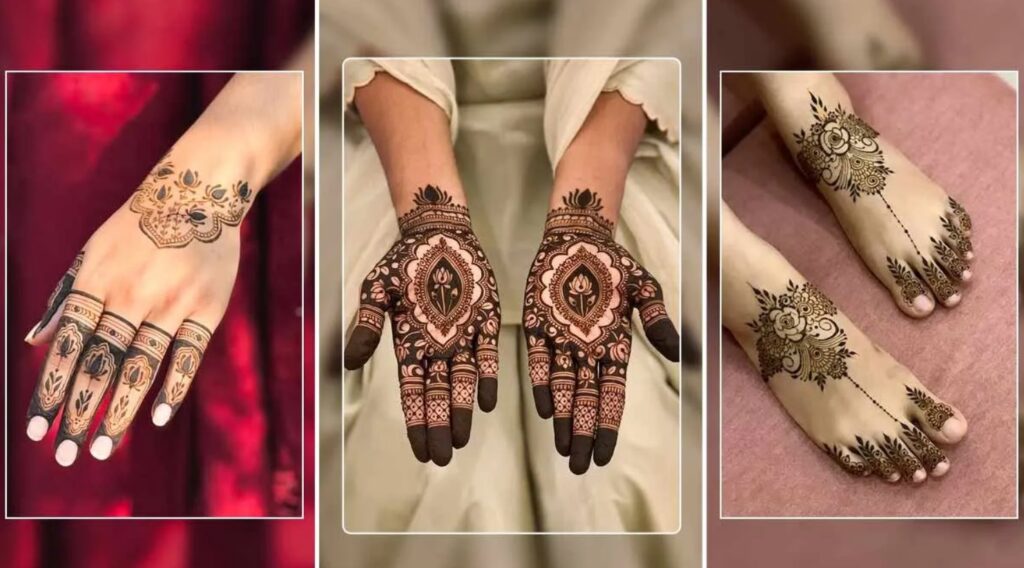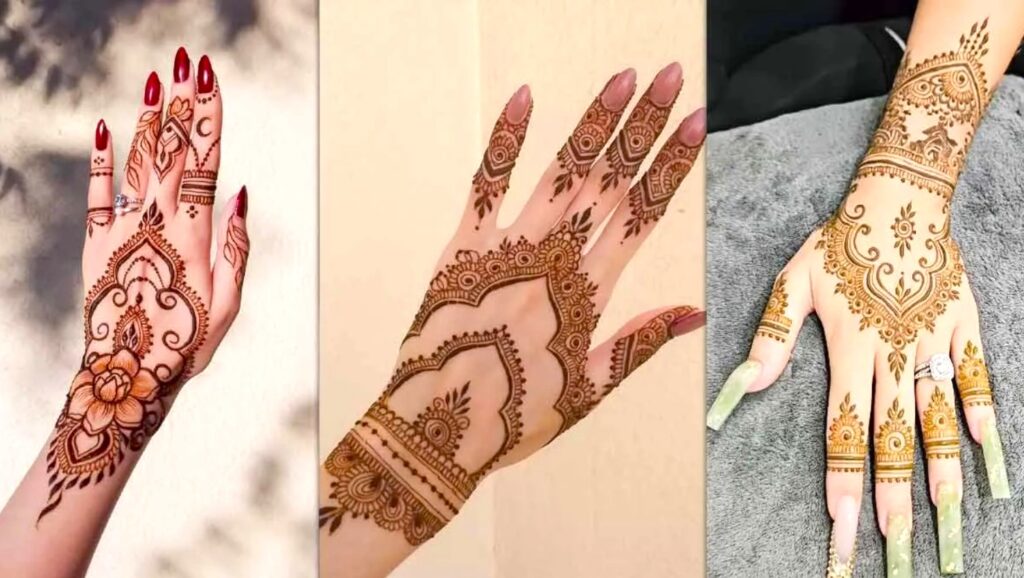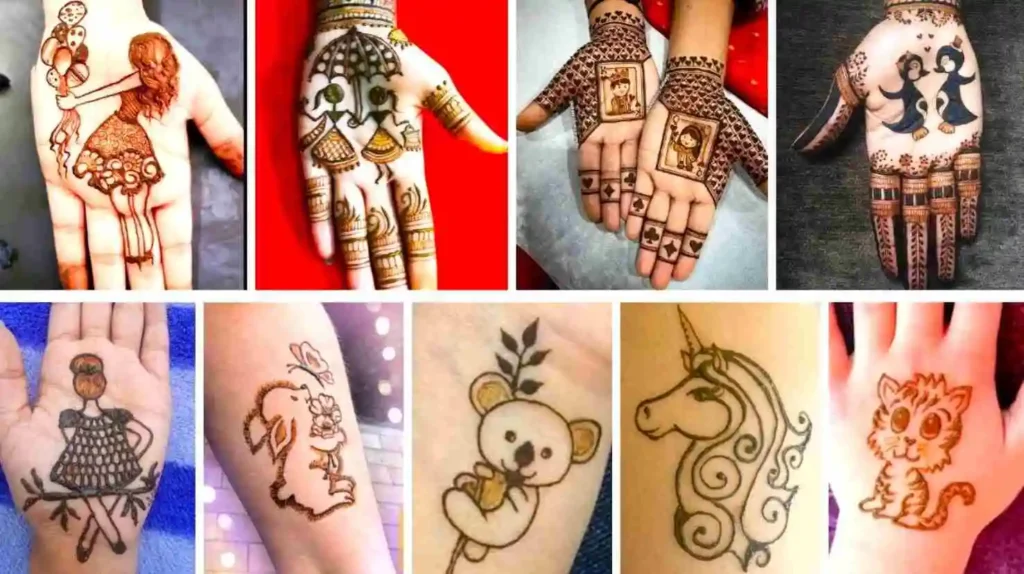Small Aesthetic Henna Designs: The Art of Subtle Expression
In a world that often celebrates the bold and the extravagant, there is a quiet, growing revolution in the realm of body art: the rise of small aesthetic henna designs. These delicate, intricate patterns are moving beyond the traditional full-hand adornments associated with weddings and festivals, finding a cherished place in everyday life. Unlike their larger, more elaborate counterparts, these miniature masterpieces offer a touch of elegance and personal significance without the commitment or the grandeur. They are the perfect fusion of ancient tradition and contemporary style, appealing to a global audience seeking subtle ways to express their individuality. The allure of these designs lies in their versatility; a tiny, beautifully rendered motif on the wrist, ankle, or finger can be as powerful a statement as a full sleeve of mehndi.
“The use of the henna plant for cosmetic and healing purposes dates back over 5,000 years to ancient Egypt… For a detailed botanical and historical overview, you can explore the Henna page on Wikipedia.”
The term small aesthetic henna designs specifically refers to intentional, minimalist applications of mehndi paste that prioritize elegance, simplicity, and personal meaning over coverage. This trend is not about diminishing the cultural importance of henna but rather about adapting it for modern, fast-paced lifestyles. It’s for the person who wants a hint of bohemian flair for a coffee date, a subtle accent for a professional setting, or a personal talisman hidden in plain sight.
This guide will delve deep into the world of these exquisite designs, exploring their rich history, their newfound importance, the latest trends for 2025, and a practical step-by-step guide to creating your own. We will uncover the benefits and few drawbacks, gather expert tips, and gaze into the future of this beautiful art form, proving that sometimes, the smallest details make the most significant impact.
What Exactly Are Small Aesthetic Henna Designs?
Small aesthetic henna designs are a contemporary interpretation of the ancient art of mehndi. They are characterized by their limited scale, fine lines, and focused placement on specific areas of the body. Rather than covering entire hands or feet, these designs occupy small, strategic canvases like the side of a palm, the space between the thumb and index finger (the web), the collarbone, or the ankle bone.
The keyword here is “aesthetic.” It implies a deliberate focus on beauty, balance, and visual appeal. These aren’t hastily drawn doodles; they are well-thought-out patterns that complement the body’s natural contours. Common elements include micro-floral patterns, single-line motifs, geometric shapes, tiny symbols like moons or stars, and minimalistic representations of animals or objects. The goal is to create a piece of art that feels like a natural extension of the wearer’s style—a subtle accessory rather than a dominant feature.
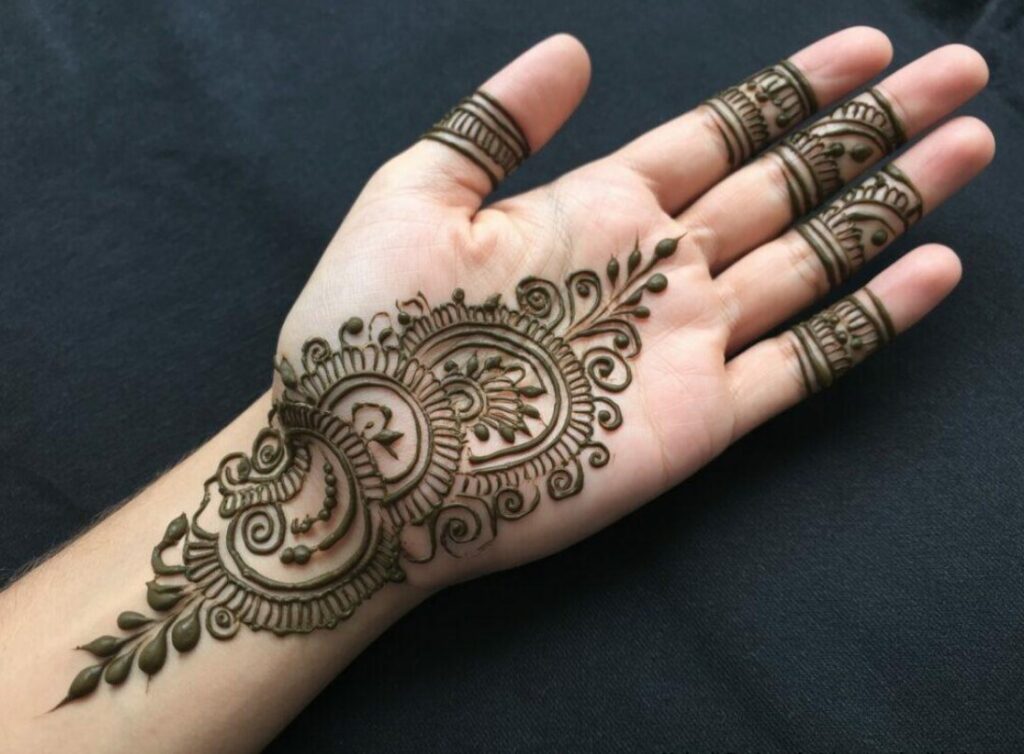
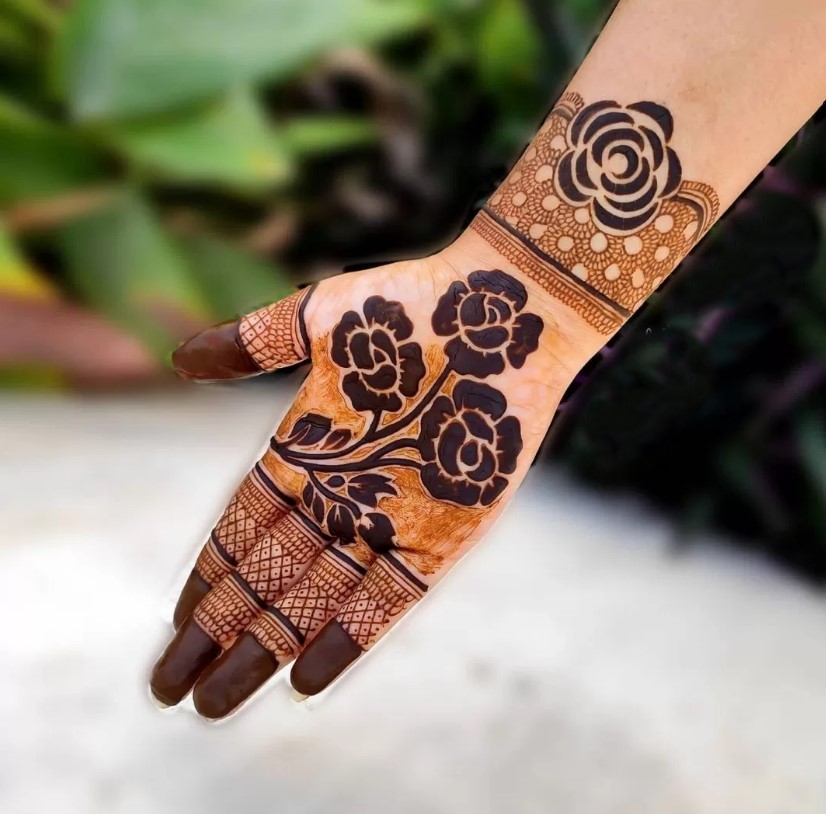
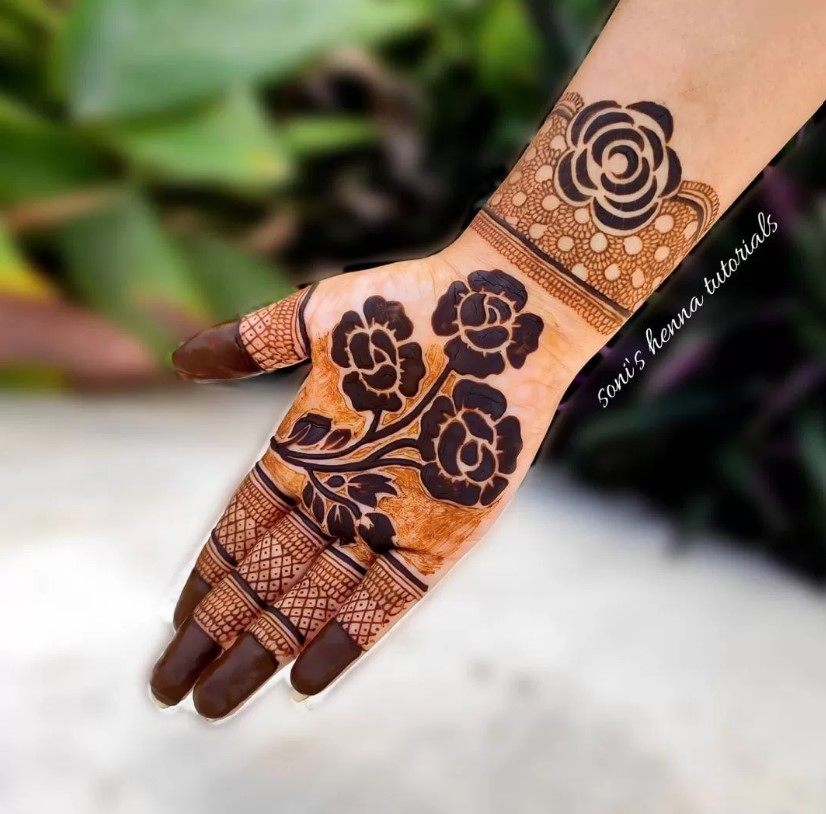

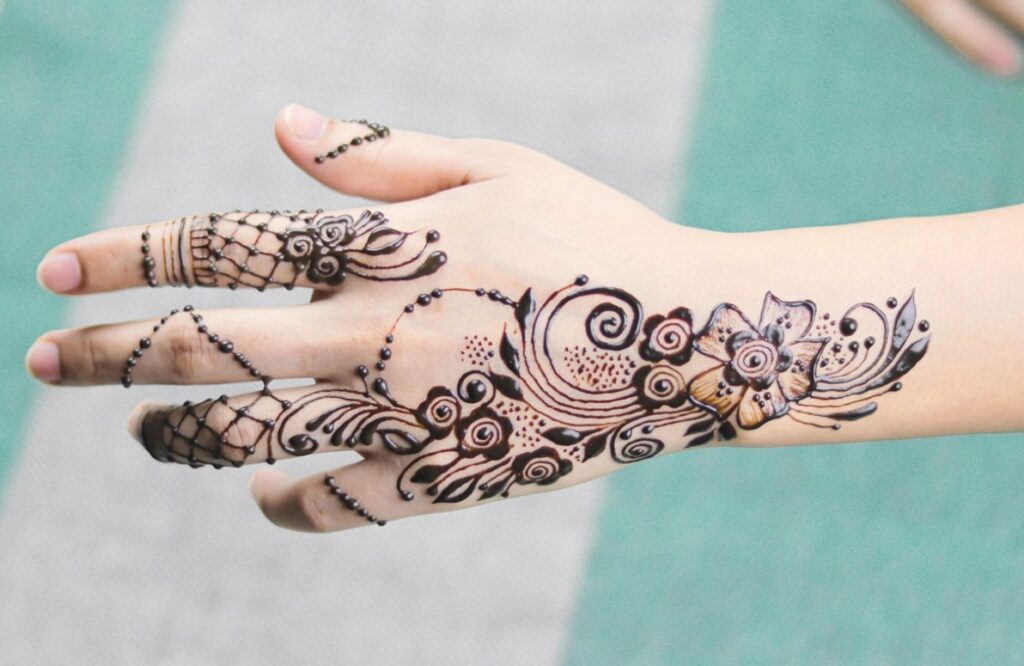
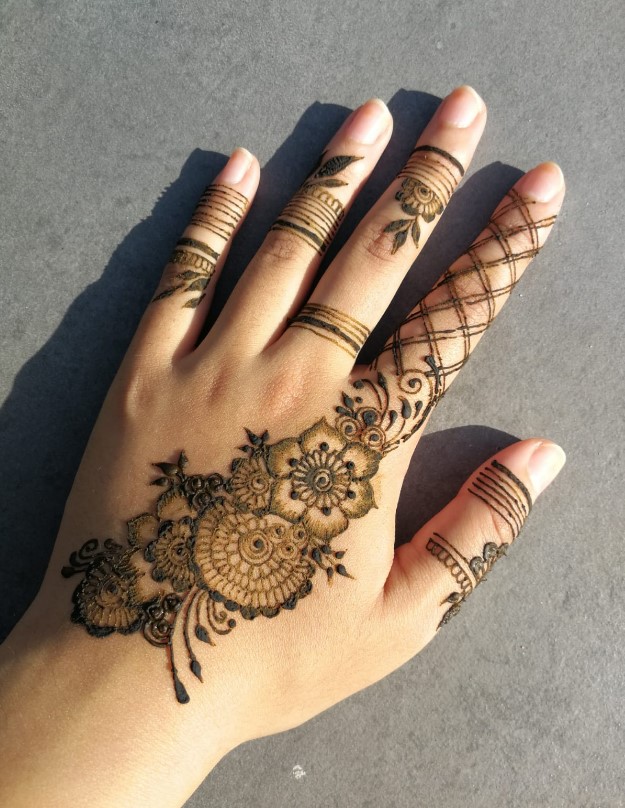
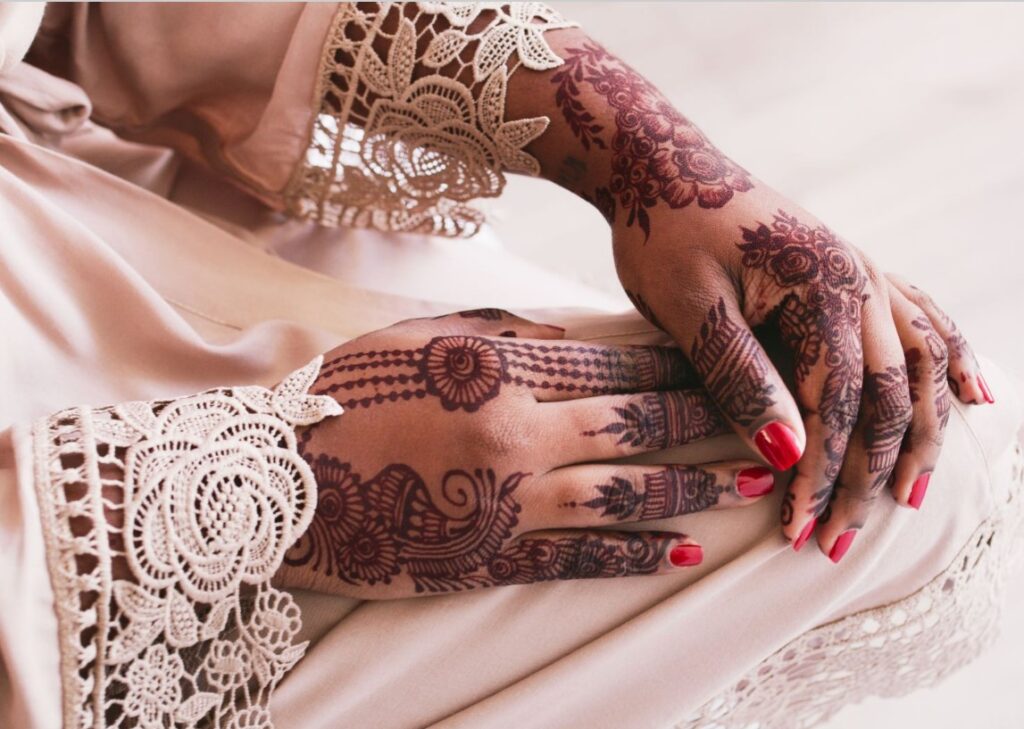
A Brief History: From Ancient Rituals to Modern Wrists
The story of henna, or mehndi, is as rich and intricate as its patterns. The use of the henna plant for cosmetic and healing purposes dates back over 5,000 years to ancient Egypt, where it was believed Cleopatra used it to adorn her body. Evidence also points to its use in ancient India and the Middle East, not just for beauty but for its natural cooling properties in hot climates. Traditionally, the application of mehndi design was deeply rooted in cultural and spiritual ceremonies, most notably in South Asian, African, and Middle Eastern weddings. The elaborate patterns symbolized joy, beauty, spiritual awakening, and offering protection.
For centuries, the designs were large and complex, covering the hands and feet in a lace-like tapestry. The shift towards small aesthetic henna designs is a relatively modern phenomenon, largely driven by globalization and the fusion of cultures. As henna gained popularity in the Western world, its application began to adapt. People sought ways to incorporate the beauty of this temporary art into their daily lives without the cultural specificity or the time-intensive process of traditional application. This led to the birth of the minimalist mehndi trend, which respects the art’s origins while making it accessible and relevant for a new generation.
The Importance and Rising Popularity of Minimalist Mehndi
Why have these small designs captured so many hearts? Their importance lies in their unique ability to bridge multiple worlds. Firstly, they offer a form of cultural appreciation. Individuals who may not belong to a culture with deep henna traditions can still appreciate and wear the art in a respectful, non-appropriative way by choosing simple, non-ceremonial designs. Secondly, they align perfectly with the modern minimalist lifestyle. In an age of “less is more,” a tiny, meaningful design resonates more than an overwhelming one.
Furthermore, small aesthetic henna designs are incredibly versatile. They can be easily concealed, making them suitable for professional environments where visible tattoos might be frowned upon. They are also more social media-friendly. Their discreet nature photographs beautifully and lends itself to the trend of “hidden” or “secret” tattoos, which creates a sense of intimacy and personal connection for the wearer. This shift signifies a move towards personalization and meaning over sheer spectacle.
Top Trends in Small Aesthetic Henna Designs for 2025
The world of mehndi is constantly evolving. The year 2025 brings a fresh wave of inspiration, blending traditional elements with futuristic concepts. Here’s what’s trending:
1. Micro-Realism and Fine-Line Art
Artists are pushing the boundaries of what’s possible with a henna cone, creating unbelievably tiny and realistic designs. Think of a miniature, perfectly rendered butterfly, a single delicate flower with shaded petals, or a tiny portrait profile. This trend requires immense skill and showcases the artistic potential of small aesthetic henna designs.
2. Negative Space and Geometric Patterns
Modern mehndi design is playing with form and space. Designs that incorporate the natural skin tone as part of the pattern are gaining popularity. Think of a geometric mandala where certain segments are left unfilled, or a series of fine lines that create a shape through negative space. This approach feels architectural and contemporary.
3. Personalized Symbols and Fingerprint Integration
The demand for personal meaning is higher than ever. A major trend is incorporating initials, significant dates, or astrological symbols seamlessly into floral patterns. An even more innovative idea is using a scan of one’s own fingerprint as the base pattern for a unique, deeply personal tattoo design.
4. Wrist Cuffs and Anklets
Instead of a single motif, continuous patterns that wrap around the wrist like a cuff or the ankle like a bracelet are hugely popular. These designs are often a chain of small, interconnected elements, creating an elegant accessory-like effect.
Image Suggestion: An infographic titled “2025 Trends in Small Aesthetic Henna Designs” with icons for each trend.
ALT Text: Infographic showcasing the latest trends in minimalist mehndi for 2025.
Your Step-by-Step Guide to Creating a Small Henna Design
Creating your own small aesthetic henna design is a rewarding experience. Follow this beginner-friendly guide.
Step 1: Gather Your Materials
You will need a few key items: a fresh, high-quality henna cone (pre-made cones are widely available online), medical tape or a steadying tool, lemon juice and sugar mix for sealing, cotton balls, and essential oils like eucalyptus or tea tree to help darken the stain.
Step 2: Prepare the Skin
The canvas is crucial. Wash the area where you will apply the mehndi with soap and water to remove any oils or lotions. For an even darker stain, you can gently exfoliate the skin. Ensure the area is completely dry before you begin.
Step 3: Practice and Plan
Before applying to your skin, practice your design on paper. This helps you control the flow of the henna paste. Once confident, you can lightly sketch the outline of your chosen small aesthetic henna design on your skin with a washable eyeliner pencil.
Step 4: Application Technique
Hold the henna cone like a pen. Apply gentle, even pressure, allowing a thin, consistent line to flow onto the skin. Start from the center of your design and work outwards to avoid smudging. For very fine lines, use the very tip of the cone.
Step 5: Aftercare for a Darker Stain
Once the design is complete, let the paste dry naturally. To darken the stain, mix a little lemon juice with sugar and dab it over the dried paste. Keep the paste on for as long as possible (4-6 hours is ideal). Once the paste cracks, gently scrape it off; do not wash with water. Avoid water on the design for the next 12-24 hours for the best results.
The Benefits and Drawbacks of Small Aesthetic Henna
Benefits:
- Low Commitment: As a temporary tattoo, design, it allows you to change your body art as often as you like.
- Quick Application: Most small designs take only a few minutes to apply, unlike traditional mehndi.
- Painless and Natural: Henna is a natural plant-based paste, making the process completely pain-free and safe for most skin types.
- Cost-Effective: A single cone can create multiple small designs, making it an affordable beauty option.
- High Versatility: Perfect for any occasion, from a casual day out to a formal event.
Drawbacks:
- Short-Lived: The stain typically lasts 1-2 weeks, which might be a downside for those wanting permanent art.
- Allergy Risk: Some commercial cones contain harmful chemicals. It’s vital to use 100% natural henna to avoid skin reactions.
- Skill Dependent: Achieving clean, fine lines requires a steady hand and practice.
- Fading Can Be Uneven: The stain may fade patchily depending on the body part and aftercare.
Expert Tips for Flawless Small Aesthetic Henna Designs
To elevate your mehndi game, consider these pro tips. First, always do a patch test. Apply a small dot of henna on your inner arm to check for any allergic reaction 24 hours before a full application. Second, control the temperature. Henna stains best on warm skin. You can gently warm the skin beforehand or keep it warm after application. Third, master the dot. The fundamental element of many designs is a perfect dot. Practice making dots of various sizes to control paste flow.
For a richer color, apply eucalyptus or clove oil over the design after the paste has been removed. This helps to deepen and preserve the stain. Finally, be patient. Don’t rush the drying or peeling process. The longer the paste stays on, the darker and longer-lasting your small aesthetic henna design will be.
Finding Inspiration: Where to Look for Your Next Design
Inspiration for your next piece is everywhere. Social media platforms like Pinterest, Instagram, and TikTok are treasure troves. Search for hashtags like #MiniMehndi, #SmallHenna, or #FingerHenna. Nature is the original artist—look at the veins of a leaf, the pattern on a butterfly’s wing, or the structure of a flower. Architectural elements like wrought iron gates, mosaic tiles, and geometric patterns can be translated into stunning mehndi designs.
Don’t forget to look at other art forms. Embroidery patterns, particularly from cultures like Suzani or Kantha, offer intricate ideas. Even celestial maps with tiny stars and constellations can form the basis of a beautiful, personal tattoo design.
Common Mistakes to Avoid for Beginners
Starting with mehndi is exciting, but avoid these common pitfalls. Using low-quality henna is the biggest mistake. Black henna with PPD can cause severe burns. Always insist on natural, brown henna. Applying on oily or dirty skin will result in a poor stain, as the paste cannot adhere properly. Rushing the application leads to shaky lines and smudges. Take your time.
Another error is touching the design while it’s wet. This is the easiest way to ruin your hard work. Let it dry completely. Finally, washing the design too soon after the paste comes off will wash away the developing stain. Be patient for at least 12 hours.
The Future Scope of Small Aesthetic Henna Art
The future of small aesthetic henna designs is bright and innovative. We can expect to see a greater fusion with technology, such as AR filters that allow users to “try on” designs virtually before application. The use of colored and glitter henna (using safe, skin-friendly additives) is likely to become more refined and popular. Furthermore, as the DIY culture grows, we will see more sophisticated home henna kits and online tutorials that make professional-looking results accessible to everyone.
The concept may also expand into therapeutic realms, with mehndi application being used in art therapy for mindfulness and stress relief. The emphasis will continue to be on hyper-personalization, with designs acting as unique biometric signatures, telling a story that is exclusively the wearer’s own.
Frequently Asked Questions (FAQs)
1. How long do small aesthetic henna designs last?
A well-applied and cared-for design can last from 1 to 3 weeks. The duration depends on the location (areas with more friction like hands fade faster), your skin type, and the quality of aftercare. Proper sealing and avoiding water initially are key to longevity.
2. Is black henna safe for small aesthetic henna designs?
No, authentic natural henna is never black; it stains an orange-brown color. So-called “black henna” often contains a chemical called PPD (paraphenylenediamine), which can cause severe allergic reactions, blistering, and permanent scarring. Always use 100% natural brown henna.
3. Can I create a mehndi design if I’m not artistic?
Absolutely! Start with simple stencils or stamps designed for henna. You can trace a printed design using a transfer method or use practice cones on paper to build confidence. The beauty of small aesthetic henna designs is that even a simple dot or line can look elegant.
4. What’s the best place on the body for a small henna tattoo design?
The palms and soles stain the darkest and longest due to thick skin. For visibility, the top of the hands, wrists, fingers, and ankles are popular. For a more discreet placement, the collarbone, back of the neck, or behind the ear are beautiful options.
5. How can I make my mehndi design stain darker?
To achieve a dark stain, keep the paste on for 4-6 hours, apply a sugar-lemon sealant, and keep the area warm. After removing the paste, avoid water for 12-24 hours and apply a natural oil like eucalyptus or tea tree oil several times a day.
6. Are there any cultural appropriation concerns with wearing henna?
When worn with respect and understanding, henna is generally seen as cultural appreciation. It’s best to avoid specific religious or ceremonial symbols if you do not belong to that culture. Opting for generic floral, geometric, or nature-inspired small aesthetic henna designs is a respectful approach.
7. What is the difference between henna and a permanent tattoo design?
Henna is a temporary dye derived from the Lawsonia inermis plant that stains the top layers of skin, fading naturally in weeks. A permanent tattoo involves injecting ink into the dermis layer of the skin, which is permanent and involves a painful process using needles.
8. Can I get a small aesthetic henna design wet?
You should avoid getting the design wet until the paste has naturally dried, fallen off, and the stain has set for at least 12 hours. After that, brief contact with water is fine, but prolonged soaking (like swimming or long baths) will accelerate fading.
9. Where can I find inspiration for unique mehndi designs?
Look beyond traditional patterns. Explore platforms like Pinterest and Instagram using relevant hashtags. Draw inspiration from nature, architecture, embroidery patterns, and even celestial bodies to create a unique small aesthetic henna design.
10. How do I remove a henna stain quickly if I need to?
While you can’t remove it instantly, you can exfoliate the stain faster. Regular scrubbing in the shower with an exfoliating glove or a paste of baking soda and lemon juice can help speed up the fading process significantly.
Inspired to try more? Dive into our ultimate guide on [Traditional Bridal Mehndi Designs] for your next special occasion. Click Here

